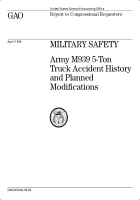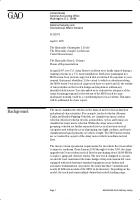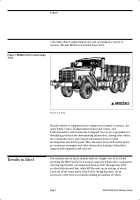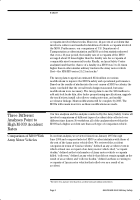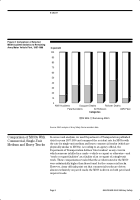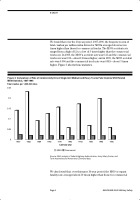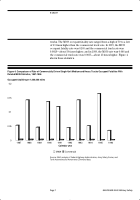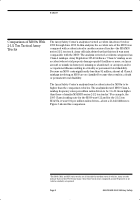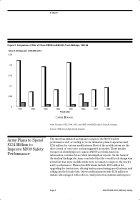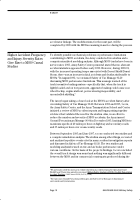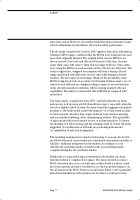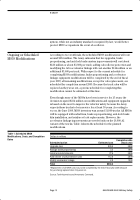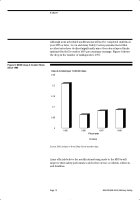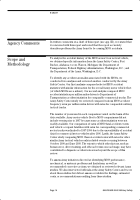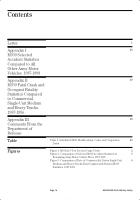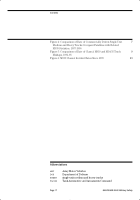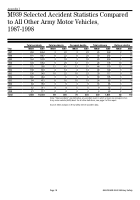GAO-NSIAD-99-82-B-282071 - Page 11 of 23
B-282071
accelerator linkage. The modifications, for the most part, will be
completed by 2005 with the M939s remaining in service during the process.
Higher Accident Frequency
and Injury Severity Rates
Give Rise to M939 Causal
Studies
To identify possible mechanical problems or performance limitations
contributing to M939 accidents, the Army conducted two studies and a
computer simulated modeling analysis. Although M939 trucks have been in
service since 1983, Army Safety Center personnel stated that no aberrant
accident statistics appeared before early 1992. However, during 1990-91,
with the increased operating tempo associated with Desert Shield/Desert
Storm, there was an increase in fatal accidents and deaths attributable to
M939s.
4
In August 1992,
TACOM
issued Safety of Use Message 92-20
discussing M939 performance limitations. This message warned of the
truck’s sensitive braking system—specifically that, when the truck is
lightly loaded and on wet pavement, aggressive braking could cause rear
wheel lockup, engine stall-out, power steering inoperability, and
uncontrolled skidding.
5
The Army began taking a closer look at the M939’s accident history after
circulating Safety of Use Message 92-20. Between 1993 and 1995,
TACOM
,
the Army Safety Center, and the Army Transportation School and Center
initiated a review of M939 accident reports and began putting together
evidence that validated the need for the studies. Also, in an effort to
reduce the number and severity of M939 accidents, the Army issued
Ground Precautionary Message 96-04 in December 1995, limiting M939s to
maximum speeds of 40 miles per hour on highway and secondary roads
and 35 miles per hour over cross-country roads.
Between September 1995 and June 1997,
TACOM
conducted two studies and
a computer simulation analysis. The studies among other things, recreated
and analyzed repetitive events cited in many accident investigation reports
and discussed in Safety of Use Message 92-20. The two studies and
modeling analysis focused on tire and air brake performance under
various conditions. On the basis of the project’s findings,
TACOM
concluded
the overall truck design was sound and nothing was significantly different
between the M939 and its commercial counterparts produced during the
4
We previously noted this increase in vehicle related fatal accidents during the Operation Desert
Shield/Desert Storm time period in our report, Military Safety: Analysis of DOD’s On-duty Non-aviation
Accident Fatalities (GAO/
NSIAD-99-14, Oct. 16, 1998).
5
The Army uses Ground Precautionary Messages and Safety of Use Messages to disseminate
servicewide safety information.
GAO/NSIAD-99-82 Military Safety
Page 10
Back to Top

